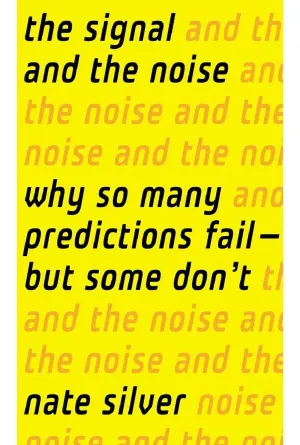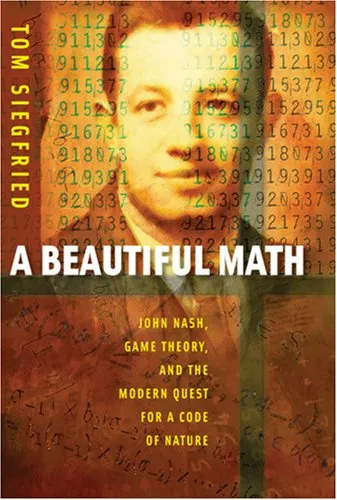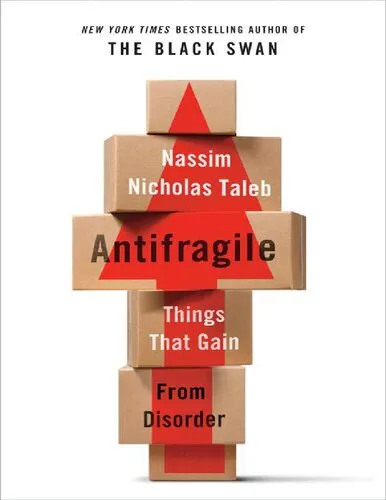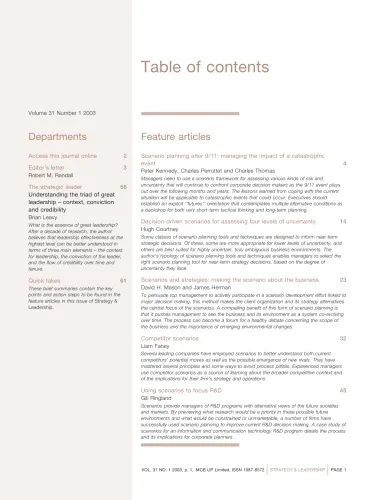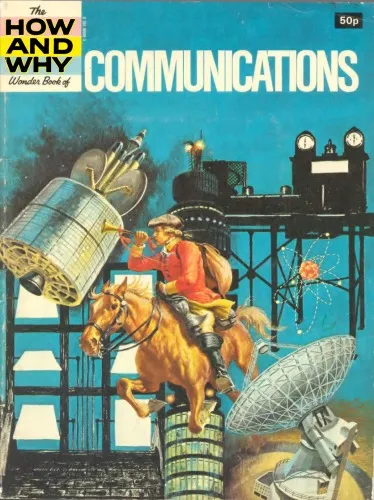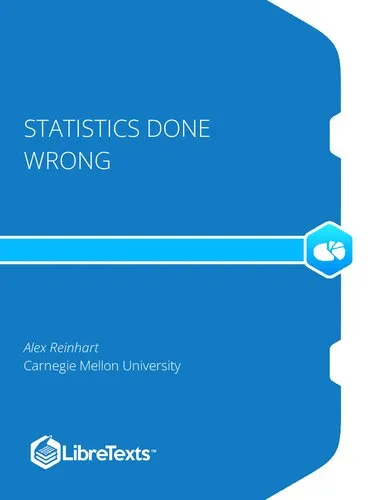The Signal and the Noise Why So Many Predictions Fail — but Some Don't
4.5
بر اساس نظر کاربران

شما میتونید سوالاتتون در باره کتاب رو از هوش مصنوعیش بعد از ورود بپرسید
هر دانلود یا پرسش از هوش مصنوعی 2 امتیاز لازم دارد، برای بدست آوردن امتیاز رایگان، به صفحه ی راهنمای امتیازات سر بزنید و یک سری کار ارزشمند انجام بدینکتاب های مرتبط:
معرفی کتاب
کتاب 'The Signal and the Noise: Why So Many Predictions Fail — but Some Don't' نوشتهٔ 'Nate Silver' یکی از آثار برجستهای است که به تحلیل علت ناکامی بسیاری از پیشبینیها و موفقیت برخی دیگر میپردازد. این کتاب به بررسی فنون و اصولی میپردازد که در پیشبینیهای دقیق و ارائهٔ تحلیلهای سازنده موثر هستند.
خلاصهای جامع از کتاب
کتاب نیت سیلور به مسئله مهمی میپردازد که در دنیای امروز بسیار مورد توجه قرار گرفته است: چگونگی تفکیک اطلاعات مفید (Signal) از اطلاعات بیهوده یا Noise. او در این کتاب از علم آمار و احتمال برای نشان دادن دلایل اصلی شکست در پیشبینیهای مختلف استفاده میکند، اعم از پیشبینیهای اقتصادی، سیاسی، یا علمی.
نیت سیلور با استفاده از مثالهای واقعی، تحلیلهایی را ارائه میدهد که نشان میدهد چرا پیشبینیکنندگان در بسیاری از موارد دچار خطا میشوند. وی توضیح میدهد که چگونه تعصبهای شناختی، استفاده نادرست از دادهها، و بیتوجهی به عدم قطعیتها موجب ایجاد Noise در روند پیشبینی میشود.
نکات کلیدی
- اهمیت تفکیک Signal از Noise در فرآیند پیشبینی.
- تقویت توانایی شهودی برای درک عدم قطعیت و استفاده صحیح از دادهها.
- شناخت خطاهای رایج در تحلیل دادهها و چگونگی اجتناب از آنها.
- ترکیب روشهای علمی با دیدگاههای عملی برای بهبود پیشبینیها.
نقل قولهای مشهور از کتاب
"ایدهٔ اصلی پیشبینی این است که با دانش کمی از گذشته، بتوانید درباره آینده چیزهایی بگویید."
"عدم قطعیت نباید باعث ترس شما شود؛ این بخشی از فرآیند طبیعی دانش است که به شما کمک میکند بهتر فکر کنید."
چرا این کتاب مهم است؟
کتاب 'The Signal and the Noise' در زمانی منتشر شد که نیاز به پیشبینیهای دقیقتر از همیشه حس میشد. در جهانی که با انقلاب اطلاعاتی مواجه است، قدرت تحلیل و تفکیک اطلاعات صحیح از غلط میتواند تفاوت زیادی در تصمیمگیریها ایجاد کند. نیت سیلور با بیان تجربیات و یافتههای خود، ابزارها و روشهایی را ارائه میدهد که میتواند به دانشمندان، تحلیلگران و حتی سیاستگذاران در بهبود فرآیند پیشبینی و تحلیل کمک کند.
این کتاب توجه زیادی به نقش آمار و احتمال در پیشبینی دارد و با ارائه مثالهای عملی، خوانندگان را به تفکر درباره محدودیتهای دانش جاری و استفاده بهینه از اطلاعات دعوت میکند. به همین دلیل، کتاب سیلور نه تنها برای پژوهشگران و دانشجویان، بلکه برای هرکسی که میخواهد درک بهتری از فرآیند پیشبینی داشته باشد، مفید است.
Introduction to 'The Signal and the Noise: Why So Many Predictions Fail — but Some Don't'
In 'The Signal and the Noise: Why So Many Predictions Fail — but Some Don't', I delve into the complexities of making accurate predictions in a world filled with uncertainty. This book dissects the mechanisms of forecasting across various domains, including economics, medicine, politics, and more. The goal is to understand why some predictions succeed while others fail miserably.
Detailed Summary of the Book
In 'The Signal and the Noise', I explore the dichotomy between signals—the meaningful information—and noise—the random, unstructured data that confuses and obscures. By investigating both historical and contemporary cases, I take readers through examples of successful predictions and spectacular failures. The book emphasizes the importance of probability, uncertainty, and humility in predictive practices.
Throughout the chapters, domains such as meteorology, economics, baseball sabermetrics, and epidemiology are examined. I illustrate how experts in each field utilize data and models to interpret the likelihood of future events. A critical aspect of the book is the emphasis on Bayesian thinking, a statistical method that involves updating probabilities as new evidence emerges. By promoting this approach, I advocate for a more nuanced and cautious stance towards predictions.
Key Takeaways
- Embrace Uncertainty: Predictions inherently involve uncertainties, and acknowledging this fact is crucial for accuracy.
- Distinguishing Signal from Noise: The ability to differentiate relevant data (signals) from irrelevant data (noise) is essential for sound decision-making.
- Bayesian Thinking is Vital: Updating beliefs with new evidence and thinking probabilistically enhances the predictive process.
- Overconfidence is Detrimental: Many predictive failures can be attributed to overconfidence and an underestimation of uncertainty.
- Cross-disciplinary Insights: Learning from various fields enriches our understanding of prediction and improves outcomes.
Famous Quotes from the Book
"The signal is the truth. The noise is what distracts us from the truth."
"Distinguishing the signal from the noise requires both scientific knowledge and self-knowledge."
Why This Book Matters
'The Signal and the Noise' is significant because it addresses the endemic failure in many predictive practices across industries. In an era heavily reliant on data, making accurate predictions has never been more valuable or challenging. The book encourages critical thinking, advocating for a refined approach to understanding and acting upon data.
Furthermore, it underscores the limitations and potentials within predictive models, pressing for a balanced view that combines innovation with skepticism. As we grapple with global crises—be it financial market volatility, climate change, or public health issues—the lessons imparted in this book are timely and necessary, offering a roadmap to more reliable forecasting.
دانلود رایگان مستقیم
شما میتونید سوالاتتون در باره کتاب رو از هوش مصنوعیش بعد از ورود بپرسید
دسترسی به کتابها از طریق پلتفرمهای قانونی و کتابخانههای عمومی نه تنها از حقوق نویسندگان و ناشران حمایت میکند، بلکه به پایداری فرهنگ کتابخوانی نیز کمک میرساند. پیش از دانلود، لحظهای به بررسی این گزینهها فکر کنید.
این کتاب رو در پلتفرم های دیگه ببینید
WorldCat به شما کمک میکنه تا کتاب ها رو در کتابخانه های سراسر دنیا پیدا کنید
امتیازها، نظرات تخصصی و صحبت ها درباره کتاب را در Goodreads ببینید
کتابهای کمیاب یا دست دوم را در AbeBooks پیدا کنید و بخرید
1427
بازدید4.5
امتیاز0
نظر98%
رضایتنظرات:
4.5
بر اساس 0 نظر کاربران
Questions & Answers
Ask questions about this book or help others by answering
No questions yet. Be the first to ask!
